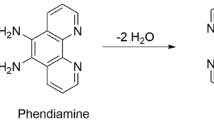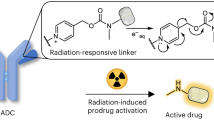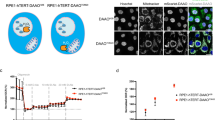Abstract
Although nanomaterials have shown promising biomedical application potential, incomplete understanding of their molecular interactions with biological systems prevents their inclusion into mainstream clinical applications. Here we show that black phosphorus (BP) nanomaterials directly affect the cell cycle’s centrosome machinery. BP destabilizes mitotic centrosomes by attenuating the cohesion of pericentriolar material and consequently leads to centrosome fragmentation within mitosis. As a result, BP-treated cells exhibit multipolar spindles and mitotic delay, and ultimately undergo apoptosis. Mechanistically, BP compromises centrosome integrity by deactivating the centrosome kinase polo-like kinase 1 (PLK1). BP directly binds to PLK1, inducing its aggregation, decreasing its cytosolic mobility and eventually restricting its recruitment to centrosomes for activation. With this mechanism, BP nanomaterials show great anticancer potential in tumour xenografted mice. Together, our study reveals a molecular mechanism for the tumoricidal properties of BP and proposes a direction for biomedical application of nanomaterials by exploring their intrinsic bioactivities.
This is a preview of subscription content, access via your institution
Access options
Access Nature and 54 other Nature Portfolio journals
Get Nature+, our best-value online-access subscription
$29.99 / 30 days
cancel any time
Subscribe to this journal
Receive 12 print issues and online access
$259.00 per year
only $21.58 per issue
Buy this article
- Purchase on Springer Link
- Instant access to full article PDF
Prices may be subject to local taxes which are calculated during checkout






Similar content being viewed by others
Data availability
The data supporting the findings of this study are available within the paper and its Supplementary Information, and in the Zenodo repository with the identifier https://doi.org/10.5281/zenodo.4765651. Source data are provided with this paper.
References
Kim, B. Y. S., Rutka, J. T. & Chan, W. C. W. Current concepts: nanomedicine. N. Engl. J. Med. 363, 2434–2443 (2010).
Patra, J. K. et al. Nano based drug delivery systems: recent developments and future prospects. J. Nanobiotechnol. 16, 71 (2018).
Albanese, A., Tang, P. S. & Chan, W. C. W. The effect of nanoparticle size, shape, and surface chemistry on biological systems. Annu. Rev. Biomed. Eng. 14, 1–16 (2012).
Tee, J. K. et al. Nanoparticles’ interactions with vasculature in diseases. Chem. Soc. Rev. 48, 5381–5407 (2019).
Peng, F. et al. Nanoparticles promote in vivo breast cancer cell intravasation and extravasation by inducing endothelial leakiness. Nat. Nanotechnol. 14, 279–286 (2019).
Kim, D. et al. Graphene quantum dots prevent alpha-synucleinopathy in Parkinson’s disease. Nat. Nanotechnol. 13, 812–818 (2018).
Liu, C. et al. Reprogramming of cancer invasiveness and macrophage education via a nanostructured antagonist of the TGFb receptor. Mater. Horiz. 6, 1675–1681 (2019).
Wang, J. P., Zhang, L. Y., Peng, F., Shi, X. H. & Leong, D. T. Targeting endothelial cell junctions with negatively charged gold nanoparticles. Chem. Mater. 30, 3759–3767 (2018).
Setyawati, M. I. et al. Titanium dioxide nanomaterials cause endothelial cell leakiness by disrupting the homophilic interaction of VE-cadherin. Nat. Commun. 4, 1673 (2013).
Zhang, X. Q. et al. Interactions of nanomaterials and biological systems: implications to personalized nanomedicine. Adv. Drug Deliv. Rev. 64, 1363–1384 (2012).
Nel, A. E. et al. Understanding biophysicochemical interactions at the nano–bio interface. Nat. Mater. 8, 543–557 (2009).
Salvati, A. et al. Transferrin-functionalized nanoparticles lose their targeting capabilities when a biomolecule corona adsorbs on the surface. Nat. Nanotechnol. 8, 137–143 (2013).
Fadeel, B. et al. Advanced tools for the safety assessment of nanomaterials. Nat. Nanotechnol. 13, 537–543 (2018).
Vu, V. P. et al. Immunoglobulin deposition on biomolecule corona determines complement opsonization efficiency of preclinical and clinical nanoparticles. Nat. Nanotechnol. 14, 260–268 (2019).
Shi, J. J., Kantoff, P. W., Wooster, R. & Farokhzad, O. C. Cancer nanomedicine: progress, challenges and opportunities. Nat. Rev. Cancer 17, 20–37 (2017).
Hanahan, D. & Weinberg, R. A. Hallmarks of cancer: the next generation. Cell 144, 646–674 (2011).
Tran, S., DeGiovanni, P. J., Piel, B. & Rai, P. Cancer nanomedicine: a review of recent success in drug delivery. Clin. Transl. Med. 6, 44 (2017).
Arquint, C., Gabryjonczyk, A. M. & Nigg, E. A. Centrosomes as signalling centres. Philos. Trans. R. Soc. B 369, 20130464 (2014).
Conduit, P. T., Wainman, A. & Raff, J. W. Centrosome function and assembly in animal cells. Nat. Rev. Mol. Cell Biol. 16, 611–624 (2015).
Azimzadeh, J. & Bornens, M. Structure and duplication of the centrosome. J. Cell Sci. 120, 2139–2142 (2007).
Nigg, E. A. & Holland, A. J. Once and only once: mechanisms of centriole duplication and their deregulation in disease. Nat. Rev. Mol. Cell Biol. 19, 297–312 (2018).
Rivera-Rivera, Y. & Saavedra, H. I. Centrosome—a promising anti-cancer target. Biologics 10, 167–176 (2016).
Yi, Y., Yu, X. F., Zhou, W. H., Wang, J. H. & Chu, P. K. Two-dimensional black phosphonts: synthesis, modification, properties, and applications. Mater. Sci. Eng. R 120, 1–33 (2017).
Sun, Z. B. et al. Ultrasmall black phosphorus quantum dots: synthesis and use as photothermal agents. Angew. Chem. Int. Ed. 54, 11526–11530 (2015).
Shao, J. D. et al. Biodegradable black phosphorus-based nanospheres for in vivo photothermal cancer therapy. Nat. Commun. 7, 12967 (2016).
Zhou, W. H. et al. Black phosphorus: bioactive nanomaterials with inherent and selective chemotherapeutic effects. Angew. Chem. Int. Ed. 58, 769–774 (2019).
Shao, J. D. et al. Black-phosphorus-incorporated hydrogel as a sprayable and biodegradable photothermal platform for postsurgical treatment of cancer. Adv. Sci. 5, 1700848 (2018).
Mahmoudi, M., Azadmanesh, K., Shokrgozar, M. A., Journeay, W. S. & Laurent, S. Effect of nanoparticles on the cell life cycle. Chem. Rev. 111, 3407–3432 (2011).
AshaRani, P. V., Mun, G. L. K., Hande, M. P. & Valiyaveettil, S. Cytotoxicity and genotoxicity of silver nanoparticles in human cells. Acs Nano 3, 279–290 (2009).
Musacchio, A. The molecular biology of spindle assembly checkpoint signaling dynamics. Curr. Biol. 25, R1002–R1018 (2015).
Maiato, H. & Logarinho, E. Mitotic spindle multipolarity without centrosome amplification. Nat. Cell Biol. 16, 386–U323 (2014).
Saunders, W. Centrosomal amplification and spindle multipolarity in cancer cells. Semin. Cancer Biol. 15, 25–32 (2005).
Hamalisto, S. et al. Spatially and temporally defined lysosomal leakage facilitates mitotic chromosome segregation. Nat. Commun. 11, 229 (2020).
Kurz, T., Terman, A., Gustafsson, B. & Brunk, U. T. Lysosomes and oxidative stress in aging and apoptosis. Biochim. Biophys. Acta Gen. Subj. 1780, 1291–1303 (2008).
Dixon, S. J. & Stockwell, B. R. The role of iron and reactive oxygen species in cell death. Nat. Chem. Biol. 10, 9–17 (2014).
Wang, X. Y. & Quinn, P. J. The location and function of vitamin E in membranes (review). Mol. Membr. Biol. 17, 143–156 (2000).
Boya, P. et al. Mitochondrial membrane permeabilization is a critical step of lysosome-initiated apoptosis induced by hydroxychloroquine. Oncogene 22, 3927–3936 (2003).
Appelqvist, H. et al. Attenuation of the lysosomal death pathway by lysosomal cholesterol accumulation. Am. J. Pathol. 178, 629–639 (2011).
Aits, S. et al. Sensitive detection of lysosomal membrane permeabilization by lysosomal galectin puncta assay. Autophagy 11, 1408–1424 (2015).
Wang, G., Jiang, Q. & Zhang, C. M. The role of mitotic kinases in coupling the centrosome cycle with the assembly of the mitotic spindle. J. Cell Sci. 127, 4111–4122 (2014).
Asteriti, I. A., De Mattia, F. & Guarguaglini, G. Cross-talk between AURKA and Plk1 in mitotic entry and spindle assembly. Front. Oncol. 5, 283 (2015).
Macurek, L. et al. Polo-like kinase-1 is activated by aurora A to promote checkpoint recovery. Nature 455, 119–U188 (2008).
Archambault, V. & Glover, D. M. Polo-like kinases: conservation and divergence in their functions and regulation. Nat. Rev. Mol. Cell Biol. 10, 265–275 (2009).
Mo, J. B., Xie, Q. Y., Wei, W. & Zhao, J. Revealing the immune perturbation of black phosphorus nanomaterials to macrophages by understanding the protein corona. Nat. Commun. 9, 2480 (2018).
Ventola, C. L. Progress in nanomedicine: approved and investigational nanodrugs. P T 42, 742–755 (2017).
Li, S. P. et al. A DNA nanorobot functions as a cancer therapeutic in response to a molecular trigger in vivo. Nat. Biotechnol. 36, 258–264 (2018).
Shao, X. M. et al. Numb regulates vesicular docking for homotypic fusion of early endosomes via membrane recruitment of Mon1b. Cell Res. 26, 593–612 (2016).
Liu, K. et al. Targeting polo-like kinase 1 by a novel pyrrole-imidazole polyamide-Hoechst conjugate suppresses tumor growth in vivo. Mol. Cancer Ther. 17, 988–1002 (2018).
Mahen, R., Jeyasekharan, A. D., Barry, N. P. & Venkitaraman, A. R. Continuous polo-like kinase 1 activity regulates diffusion to maintain centrosome self-organization during mitosis. Proc. Natl Acad. Sci. USA 108, 9310–9315 (2011).
Acknowledgements
We thank X. Liu (University of Kentucky, USA) for kindly providing Flag/GFP-PLK1 expression plasmids and anti-pS195-Clip-170 antibody. We also thank D. Boraschi (National Research Council of Italy) for critical reading and revision of the manuscript. This work was supported by grants no. 31871366 (to H.L.) and no. 81870174 (to X.S.) from the National Natural Science Foundation of China; grants no. 2021A1515012114 (to X.S.), no. 2018B030308001 (to H.L.) and no. 2016A030312006 (to L. Cai) from the Natural Science Foundation of Guangdong Province; grants no. JCYJ20200109114608075 (to X.S.), no. RCJC20200714114435061 (to X.-F.Y.), no. GJHZ20190821155803877 (to Yang Li) and no. JCYJ20170818153538196 (to W.Su) from Shenzhen Science and Technology Program; and CAS President’s International Fellowship Initiative (PIFI) 2020VBA0028 (to Yang Li).
Author information
Authors and Affiliations
Contributions
H.L., X.-F.Y. and Yang Li conceived the project and supervised the study. X.S. and Z.D. performed most cell biological, biochemical and animal experiments. W.Z., Z.L., H.C., Q.S. and G.W. prepared and characterized the nanomaterials. S.G. prepared the liposomes. B.C. and M.L. assisted with biochemical and animal experiments. Yanyan Li performed the FRAP assay. H.S., X.L. and K.L. performed live-cell imaging. Yanyan Li, X.L., W. Shi, G.C., D.L. and G.Z. participated in cell culture and immunofluorescence staining. X.S., W.Z., L. Chen, W.Su, L.F., L. Cai, D.T.L., Yang Li and X.-F.Y. discussed the data. X.S., W.Z., D.T.L., Yang Li, X.-F.Y. and H.L. wrote the manuscript.
Corresponding authors
Ethics declarations
Competing interests
The authors declare no competing interests.
Additional information
Peer review information Nature Nanotechnology thanks Matteo Goldoni and the other, anonymous, reviewer(s) for their contribution to the peer review of this work.
Publisher’s note Springer Nature remains neutral with regard to jurisdictional claims in published maps and institutional affiliations.
Supplementary information
Supplementary Information
Supplementary Figs. 1–27, unprocessed gel/blots for supplementary figures, discussion and refs. 1–20.
Supplementary Video 1
A representative live-cell movie of control HeLa cells undergoing mitosis.
Supplementary Video 2
A representative live-cell movie of BPNS-treated HeLa cells undergoing mitosis.
Supplementary Video 3
A representative live-cell movie of BPNS-treated HeLa cells undergoing apoptosis after cell division.
Source data
Source Data Fig. 4
Unprocessed western blots.
Source Data Fig. 5
Unprocessed western blots.
Rights and permissions
About this article
Cite this article
Shao, X., Ding, Z., Zhou, W. et al. Intrinsic bioactivity of black phosphorus nanomaterials on mitotic centrosome destabilization through suppression of PLK1 kinase. Nat. Nanotechnol. 16, 1150–1160 (2021). https://doi.org/10.1038/s41565-021-00952-x
Received:
Accepted:
Published:
Issue Date:
DOI: https://doi.org/10.1038/s41565-021-00952-x
This article is cited by
-
Two-dimensional nanomaterials induced nano-bio interfacial effects and biomedical applications in cancer treatment
Journal of Nanobiotechnology (2024)
-
Biomimetic MDSCs membrane coated black phosphorus nanosheets system for photothermal therapy/photodynamic therapy synergized chemotherapy of cancer
Journal of Nanobiotechnology (2024)
-
Black phosphorus boosts wet-tissue adhesion of composite patches by enhancing water absorption and mechanical properties
Nature Communications (2024)
-
Black phosphorus quantum dots camouflaged with platelet-osteosarcoma hybrid membrane and doxorubicin for combined therapy of osteosarcoma
Journal of Nanobiotechnology (2023)
-
Immunostimulant nanomodulator boosts antitumor immune response in triple negative breast cancer by synergism of vessel normalization and photothermal therapy
Nano Research (2023)



